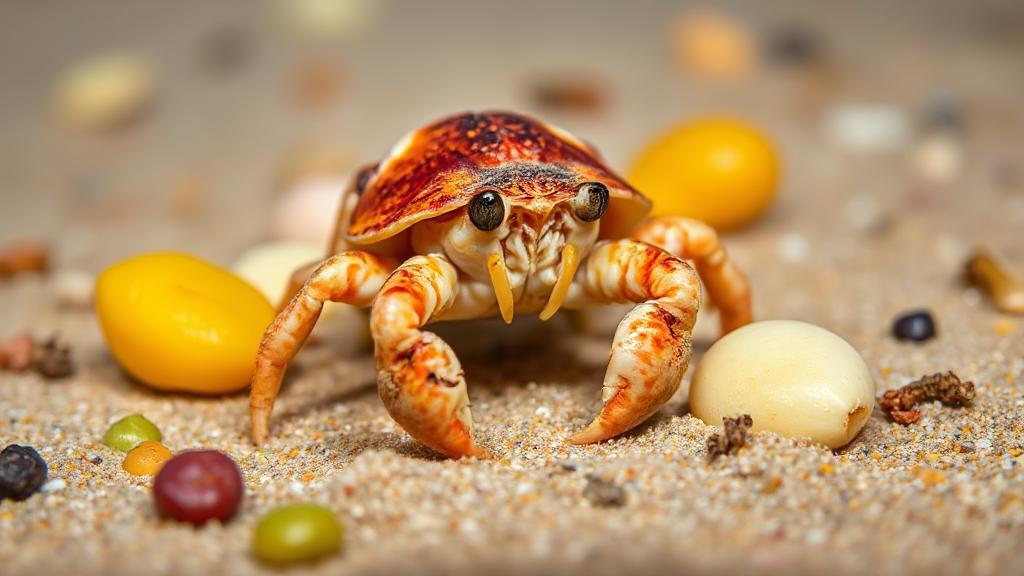Introduction to Hermit Crabs
Hermit crabs are fascinating creatures that belong to the superfamily Paguroidea. Unlike true crabs, hermit crabs have a soft, vulnerable abdomen, which they protect by occupying empty shells. These crustaceans are popular pets due to their unique behaviors and relatively easy care requirements. In the wild, hermit crabs are opportunistic omnivores, consuming a wide variety of foods including plants, animals, and fungi.
Natural Diet and Nutritional Needs
In their natural habitat, hermit crabs are opportunistic scavengers. Their diverse diet includes:
- Decaying plant material: Fallen leaves and other plant debris
- Fruits and vegetables: Various natural produce
- Animal matter: Dead fish, small invertebrates, and carrion
- Algae and plankton: Common in coastal habitats
- Detritus: Organic debris
Essential Nutrients
Hermit crabs require a balanced diet rich in:
- Protein (for growth and molting)
- Calcium (for shell and exoskeleton development)
- Carotenes (for proper coloration)
- Vitamins and minerals
Feeding Hermit Crabs in Captivity
Commercial Foods
There are many commercial hermit crab foods available that are formulated to meet their nutritional needs. Choose high-quality products without harmful additives, avoiding artificial colors or preservatives. Options include:
- High-quality commercial hermit crab food
- Fish flakes
- Freeze-dried shrimp
Fresh Foods
Recommended Fresh Foods
- Fruits: Apples, coconut, bananas, grapes, and mangoes
- Vegetables: Carrots, sweet potatoes, spinach, and leafy greens
- Proteins: Unseasoned fish, shrimp, boiled eggs
Calcium Sources
To ensure adequate calcium intake, provide:
- Cuttlebone
- Crushed eggshells
- Calcium supplements
Feeding Schedule and Habits
Hermit crabs are primarily nocturnal feeders. A recommended feeding schedule includes:
| Time | Activity |
|---|---|
| Evening | Main meal |
| Night | Active feeding |
| Morning | Remove uneaten food |
Special Considerations
During Molting
When hermit crabs molt, their feeding habits change dramatically. During this period:
- Reduce food offerings
- Maintain humidity
- Provide extra calcium sources
- Avoid disturbing the crab
Feeding Tips and Best Practices
- Variety is key: Rotate different foods to prevent boredom
- Remove uneaten food: Clear any food after 24 hours
- Provide fresh water: Both fresh and saltwater sources using dechlorinated water
- Create enrichment: Scatter food in different locations and use feeding platforms at various heights
Foods to Avoid
For the health and safety of hermit crabs, avoid:
- Processed human foods
- Salted or seasoned foods
- Toxic plants
- Painted wood or shells
- Artificial preservatives
For more detailed information about hermit crab care and nutrition, visit the Hermit Crab Association, PetMD, or The Spruce Pets' hermit crab care guide.
